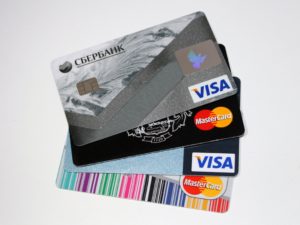 What your child learns about credit today could affect their decision-making when they have credit cards and loans of their own. Teenagers frequently see credit as an avenue to achieve instantaneous gratification, getting what they want now and figuring out the financial consequences later. Credit can serve as both a valuable tool when handled wisely and effectively, but also a major debt trap for young adults entering the workforce or entering college. Credit does not just apply to credit cards; it’s also applied to auto loans, school loans, cell phones, mortgages, etc. Therefore, youth who begin their relationship with credit on strong footing will have long lasting benefits.
What your child learns about credit today could affect their decision-making when they have credit cards and loans of their own. Teenagers frequently see credit as an avenue to achieve instantaneous gratification, getting what they want now and figuring out the financial consequences later. Credit can serve as both a valuable tool when handled wisely and effectively, but also a major debt trap for young adults entering the workforce or entering college. Credit does not just apply to credit cards; it’s also applied to auto loans, school loans, cell phones, mortgages, etc. Therefore, youth who begin their relationship with credit on strong footing will have long lasting benefits.
Availability of Credit Cards for Teens
Credit cards are readily available to young adults over the age of 18. Many credit cards are associated with financial institutions and college savings/checking accounts. Most credit cards feature options for use at about anywhere with no payoff deadline. However monthly minimum payments vary, based on the balance. Credit cards typically have the highest interest rate of the different types of credit. About 26% of teens ages 16-18 already have more than $1,000 in debt. Only 30% of teens say they understand how credit card interest and fees work. With that said, chances are, even older youth don’t realize credit card companies charge interest and additional fees that can add up real quickly. Understanding interest rates sets them on the right track. Interest is the amount you pay to use someone else’s money. The lending company issuing the credit card decides the interest rate. You pay more to buy something on credit.
cards feature options for use at about anywhere with no payoff deadline. However monthly minimum payments vary, based on the balance. Credit cards typically have the highest interest rate of the different types of credit. About 26% of teens ages 16-18 already have more than $1,000 in debt. Only 30% of teens say they understand how credit card interest and fees work. With that said, chances are, even older youth don’t realize credit card companies charge interest and additional fees that can add up real quickly. Understanding interest rates sets them on the right track. Interest is the amount you pay to use someone else’s money. The lending company issuing the credit card decides the interest rate. You pay more to buy something on credit.
Factors to Consider
These are the factors youth should be looking for when deciding to enter into a credit card agreement.
- Annual Fee- yearly charge you pay for the privilege of using credit

- Credit Limit- the maximum amount that can be purchased on the card
- Finance Charge- the actual dollar cost of using credit
Other fees that can add up quickly for a young adult using a credit card:
- spending more than your credit limit
- a late fee, a penalty for making a payment past the due date
The single best way youth can build credit is by showing creditors they are responsible with their money. They can do this by making payments on time, avoiding carrying high credit limits on cards, and never getting an over-the-limit-fee. Most importantly, it is easier to get into debt than to get out of it. Teaching youth the basics of credit increases their chances of using it wisely and avoids credit traps.
NEFE’s High School Financial Planning Program® https://www.hsfpp.org/

